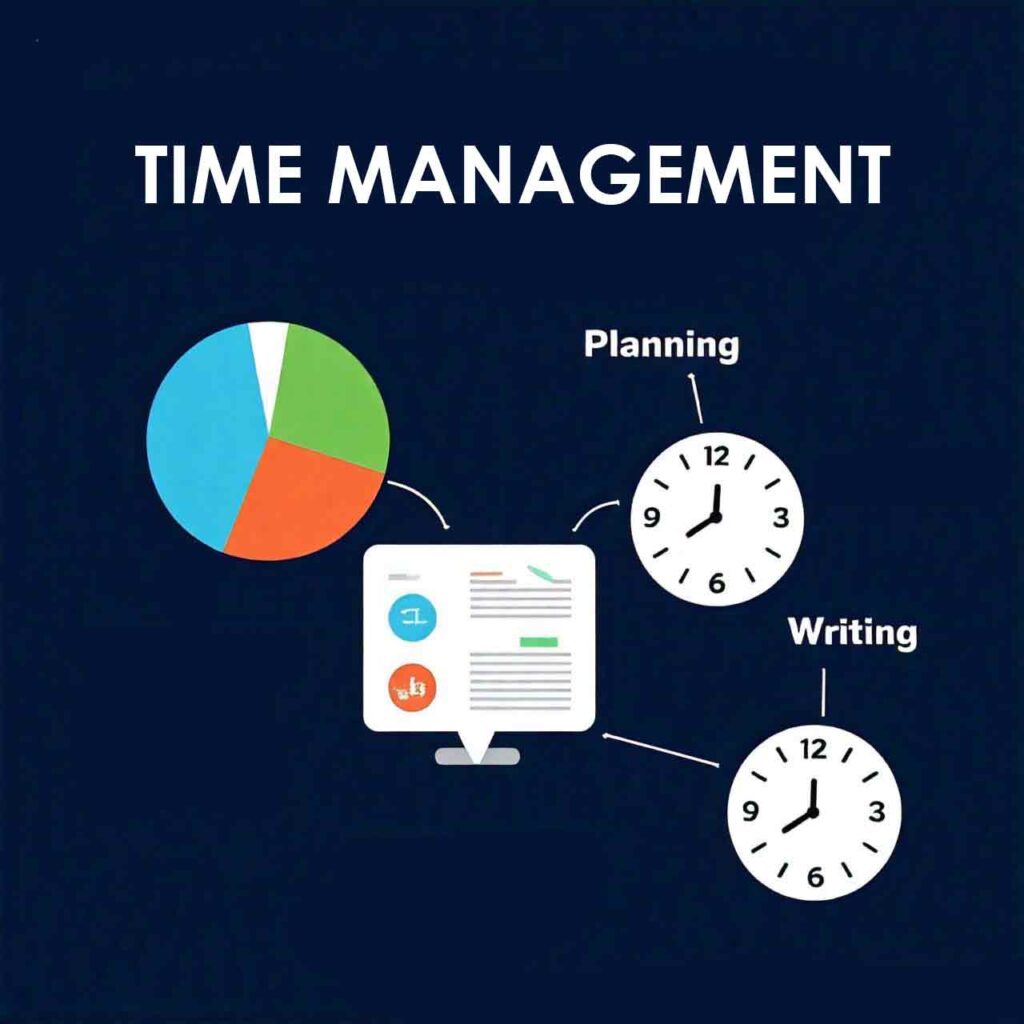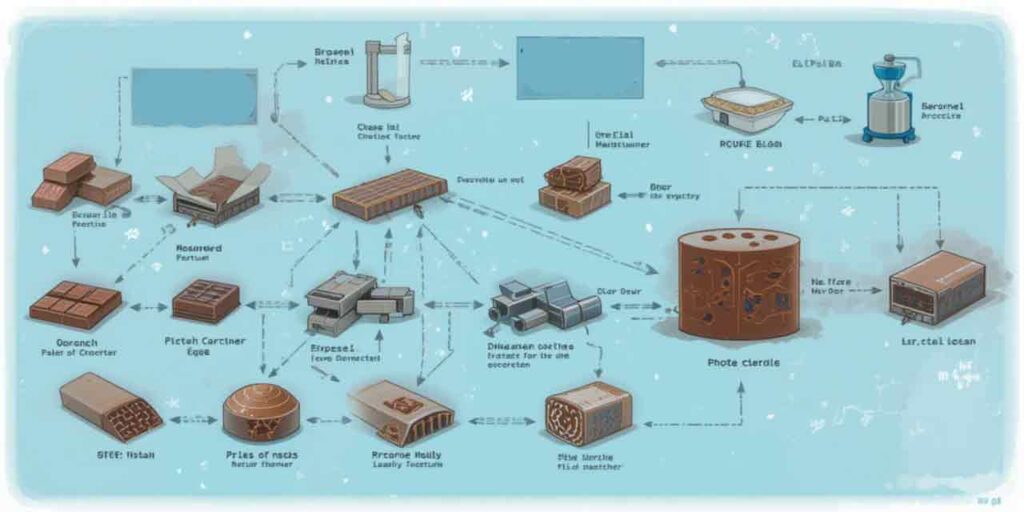This comprehensive guide to mastering IELTS process diagrams is designed to alleviate confusion and provide clarity. Staring at an IELTS process diagram can be overwhelming, but understanding its components is crucial for success in Writing Task 1. With expert guidance and detailed explanations, this resource breaks down the complexities of IELTS process diagrams, empowering test-takers to excel in this task and achieve their desired scores.
Table of Contents
Understanding Process Diagrams in IELTS
The IELTS process diagram task tests your ability to describe how something works or how a sequence of events unfolds. Unlike graphs or charts that focus on numbers, process diagrams are all about explaining steps and sequences clearly and coherently.
You’ll typically encounter three main types of process diagrams:
- Manufacturing processes (like how chocolate is made)
- Natural processes (such as the water cycle)
- Life cycles (like a butterfly’s metamorphosis)
- Technical procedures (like recycling waste)
Essential Components of a Strong Response
Time Management: Your First Priority
Let’s be real – 20 minutes isn’t much time. Here’s how I recommend breaking it down:
- 2 minutes: Analyzing the diagram
- 3 minutes: Planning your response
- 12 minutes: Writing your answer
- 3 minutes: Reviewing and editing
Remember, you need to write at least 150 words, but I usually recommend aiming for 170-180 words to ensure you’ve covered everything thoroughly without being overly wordy.

Key Language Features for Process Descriptions
When tackling an IELTS process diagram, your language choices make all the difference. You’ll need:
- Sequencing language (first, then, next, finally)
- Passive voice (is produced, are filtered, becomes transformed)
- Present simple tense for most processes
- Technical vocabulary relevant to the process
Step-by-Step Writing Guide
1. Analyzing the Diagram (2 Minutes)
First things first: don’t panic when you see the diagram. Instead, ask yourself:
- What’s the overall process?
- Where does it start and end?
- How many main stages are there?
- Are there any parallel or alternative steps?
2. Writing Your Response
The Overview Paragraph
This is crucial – according to the official IELTS Writing Band Descriptors, you need a clear overview to score above band 6. Your overview should:
- State what the diagram shows
- Mention the main stages or phases
- Avoid specific details
Here’s an example: “The diagram illustrates the process of chocolate production, from harvesting cocoa beans to the final packaging of chocolate bars. The process involves several main stages, including fermentation, roasting, and molding.”
Main Body Paragraphs
Organize your description logically, following the sequence shown in the diagram. Use appropriate linking words to show progression:
“Initially, the cocoa beans are harvested and fermented. Following this, they undergo a drying process before being roasted at high temperatures. Once roasted, the beans are ground into a fine paste…”
Sample Analysis with Real Examples

Example 1: Manufacturing Process – Chocolate Production
Model Answer: “The diagram demonstrates the industrial process of manufacturing chocolate from cocoa beans. Overall, this is a complex procedure involving eight distinct stages, beginning with harvesting and ending with packaging.
The process commences when cocoa beans are harvested from trees. These beans then undergo fermentation, typically lasting several days, followed by a thorough drying period. Once dried, the beans are roasted at specific temperatures to develop their characteristic chocolate flavor.
After roasting, the beans are ground into a fine paste known as cocoa mass. This paste is then combined with additional ingredients such as sugar and milk powder in a mixing stage. The mixture undergoes conching, a process that develops the flavor and texture, before being tempered to ensure proper crystallization. Finally, the chocolate is molded into its desired shape and packaged for distribution.”

Example 2: Natural Cycle – Water Cycle
Common Mistakes to Avoid
- Overlooking the Overview Don’t jump straight into the details. A clear overview is essential for a high band score.
- Using Incorrect Tenses Stick to present simple for most processes unless the diagram specifically indicates historical changes.
- Overcomplicating Descriptions Keep it clear and concise. You don’t need to mention every minor detail.
Tips for Higher Band Scores
To boost your score, focus on:
- Precise Vocabulary Instead of saying “goes to,” use more accurate verbs like:
- transforms
- converts
- develops into
- evolves
- Complex Sentences Combine ideas using relative clauses and participle phrases: “The water, having evaporated from the ocean’s surface, forms clouds in the atmosphere.”
- Cohesive Devices Use a variety of linking words naturally:
- Subsequently
- Following this
- This leads to
- As a result
Practice Exercises
The key to improvement is practice. Try these exercises:
- Quick Analysis Exercise Set a timer for 2 minutes and practice identifying:
- Start and end points
- Main stages
- Parallel processes
- Optional steps
- Vocabulary Building Create word banks for different types of processes:
- Manufacturing vocabulary
- Natural process terms
- Technical procedure language
Conclusion
Mastering IELTS process diagrams isn’t about memorizing templates – it’s about understanding what the examiners want and delivering it effectively. Focus on clear organization, appropriate vocabulary, and accurate grammar. With practice and the right approach, you can confidently tackle any process diagram that comes your way.
Remember, the goal isn’t just to describe what you see – it’s to demonstrate your ability to communicate complex information clearly and coherently in English. Keep practicing, and you’ll see improvement in no time.



